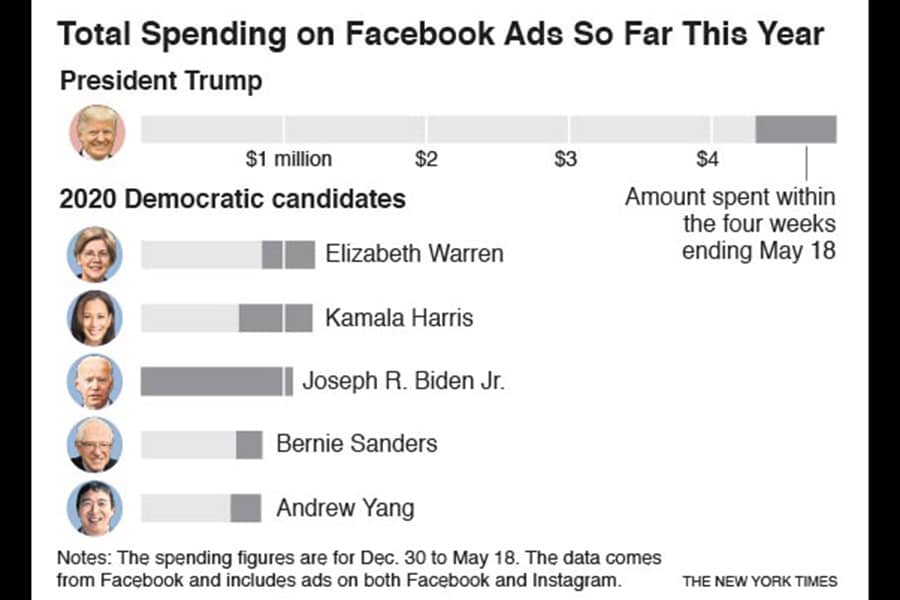
How Trump is outspending every 2020 democrat on Facebook
The Trump campaign anticipates spending hundreds of millions of dollars on its online strategy for the 2020 election, according to officials familiar with the plans
 President Donald Trump’s re-election campaign has spent far more than any single Democratic presidential candidate on Facebook advertising.
President Donald Trump’s re-election campaign has spent far more than any single Democratic presidential candidate on Facebook advertising.
WASHINGTON — President Donald Trump’s re-election campaign has spent far more than any single Democratic presidential candidate on Facebook advertising this year, reprising a strategy that was central to his 2016 victory.
The president spent particularly heavily on Facebook ads at the beginning of the year, when the number of Democratic candidates was smaller, and until late March his spending exceeded that of all of the Democratic candidates put together.
The playing field has now shifted. Democrats’ collective spending surpassed Trump’s total, and now stands at about $9.6 million this year, compared with $4.9 million for the president. A large part of the surge has come from the campaign of former Vice President Joe Biden, who has pumped more than $1 million into Facebook ads since entering the race last month, outspending Trump for three of the past four weeks.
“For a long time, Trump was running an intensive campaign that no one was paying attention to,” said Mike Schneider, a partner at Bully Pulpit Interactive, a Democratic political and brand communications firm that is tracking Facebook spending by the presidential candidates.
“And while Democrats have picked up their efforts, they’re fighting over the same group of supporters while he’s broadly expanding his base,” Schneider said.
As Americans consume large amounts of information on social media platforms, Facebook has become a crucial method for reaching voters, and for securing the small donations that have become so important for campaigns. Running ads on Facebook is a valuable technique for candidates seeking to build their email list — a precious asset used for soliciting donations — while also delivering their message directly to voters.
©2019 New York Times News Service

















